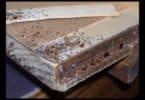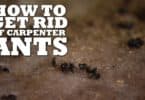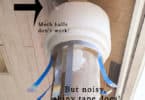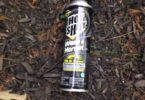As cute as they may look in cartoons, chipmunks are not the lovable furballs they are portrayed as. They will eat as much bird seed as they can so a garden will be lacking in the bird’s sound and color. They will also eat any bird eggs and hatchlings they find. However, the most detrimental may be the fact that they will burrow into retaining walls and foundations causing extensive damage and costly repairs to the homeowner. Thankfully, there are precautions that can be taken to prevent chipmunks from settling in an area and several methods of removing them.
A Well Groomed Yard
In the pest control industry, there is a method called habitat modification. It may seem passive to some, buy by simply modifying the aspects of the yard that cause the chipmunks to call it home, they are likely to travel next door to see what is offered there. To do this, clear the yard of debris. Remove brush and rock piles, stacks of firewood, thick bushes, and anywhere else the little critters may try to find shelter. Also, trip the long grass near the edges of outdoor structures and the sides of the home. This lessens the chance that they will burrow into the foundation. Finally, invest in a birdfeeder that does not spill its contents easily, or purchase a bird seed that specifically states it is undesirable to other small animals. These simple preventive and preemptive measures may be all that is needed to rid a yard of chipmunks.
Hardware Cloth
This method requires a bit of installation, but it will keep the chipmunks and other rodents from turning your home into theirs as well. Purchase ¼ inch hardware cloth from any gardening supply store or home improvement store. This will be used as a barrier so that the chipmunks cannot burrow under porches and other structures. Bury the hardware cloth at least 8 inches below the surface, and attach it with staples or an adhesive to the structure. This hardware cloth does not have to cover the entire surface of the yard; as long as it covers about 3 feet out from the structures, you do not have to worry about the chipmunks causing damage to your home.
Traps
There are two types of trap that are used when chipmunks are concerned. The first type of trap is a live trap. This kind lures the chipmunks into a cage and effectively traps them inside. This is the most humane method of chipmunk removal, but it does have a few downfalls. Live traps are much more expensive. Also, you will have to take the time to relocate the chipmunks after they have been caught. Most likely, you will catch one at a time, and they live about ten to an acre. Be prepared to take about 10 trips to a park set the critters free.
The other type of chipmunk trap is the kind that kills them. A simple rat trap with bait may be all that is necessary to remove them from your yard. Reusable traps that kill the chipmunks are cost effective and relatively quick. The only thing you will need to do is clean the trap, which is not the most pleasant task.
When deciding which trap to use, it all comes down to how much time and money you want to spend, and whether or not you are concerned with the long term well-being of the rodents. Also, bear in mind that rat traps are not a safe method if you have small, curious children roaming your back yard.
<>






